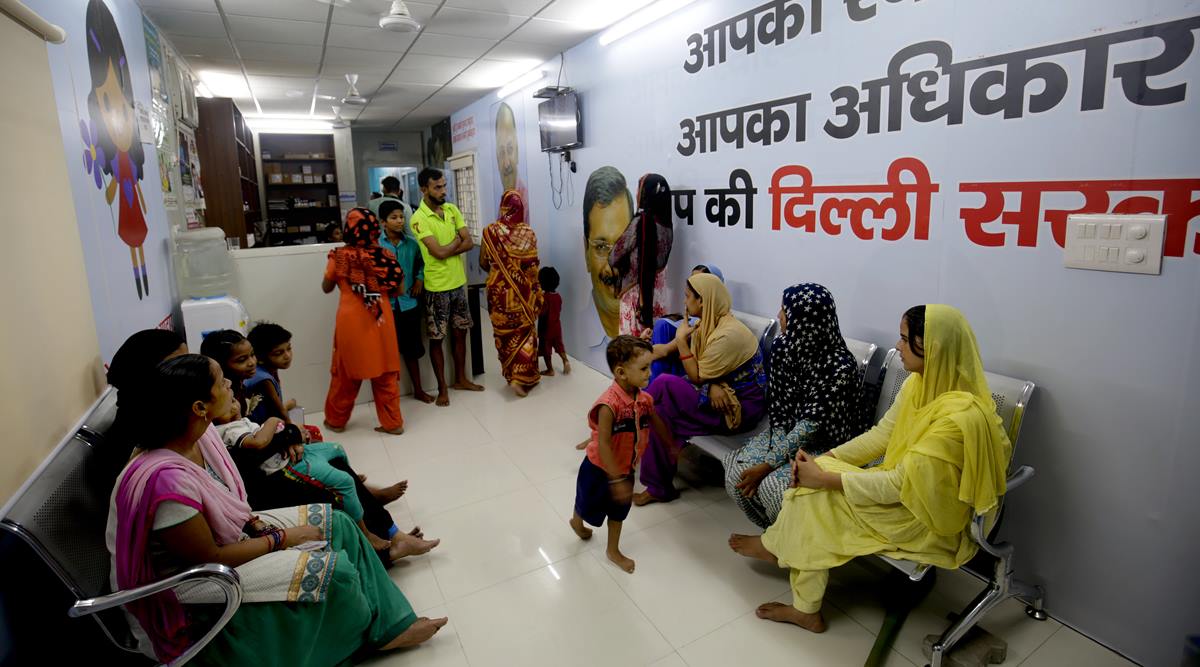 The government was able to add 17 new mohalla clinics in 2021, taking the total number to 520. (File)
The government was able to add 17 new mohalla clinics in 2021, taking the total number to 520. (File) While Delhi’s healthcare infrastructure improved significantly in 2021, several healthcare indicators such as routine immunisation, maternal mortality, and detection of tuberculosis cases worsened during the year when the capital witnessed its worst Covid-19 wave, shows Delhi’s outcome budget and economic survey released on Friday.
The total number of beds in Delhi government hospitals increased to 13,844 in 2021 from 12,464 the year before. The increase of 1,380 beds is largely owing to operationalisation of three of Delhi government’s newly constructed hospitals in Burari, Ambedkar Nagar and Dwarka. The three hospitals will have a capacity of over 3,000 beds once fully operationalised.
However, the increase in the number of beds is marginal when compared to the increase in the number of ventilator, ICU, and oxygen-supported beds that was achieved in 2021. From just 447 ventilators available in Delhi government hospitals before the pandemic, the numbers increased to 733 in 2020 and 1,255 in 2021. Similarly, the number of ICU beds increased from just 534 across all Delhi government hospitals in 2019, to 1,229 in 2020, and 2,296 in 2021 — an over four-fold increase amidst the pandemic. The number of oxygen-supported beds went up from 3,865 in 2019 to 6,580 in 2020 and 9,243 in 2021, according to the outcome budget.
To augment the availability of oxygen, the government also set up 52 pressure swing adsorption oxygen plants across 24 of its hospitals in 2021.
As for primary healthcare, the government was able to add 17 new mohalla clinics and one polyclinic in 2021, taking the total numbers to 520 and 29 respectively.
The number of people availing benefits of the government’s flagship schemes — free treatment of accident, burns, and acid attack victims and free surgeries at private hospitals — reduced during 2021, shows the outcome budget. Only 2,804 victims of accident, acid attack, or burns availed the benefits till December 2021 as compared to 6,131 in 2020 and 4,419 in 2019. The number of people who availed benefits of free surgery under the Delhi Arogya Kosh scheme was 977 in 2021 as compared to 1,459 in 2020, and 2,248 in 2019.
The number of free diagnostic tests availed from private centres increased again after a dip in 2020 — 71,559 tests were conducted in 2021, 56,758 in 2020, and 78,867 in 2019.
Despite the increase in health infrastructure, Covid-19 took its toll on routine health programmes in 2021. The typhoid vaccine coverage reduced to 63% in 2021 as compared to 100% in 2020, according to the outcome budget.
The maternal mortality ratio — maternal deaths per 100,000 live births — went up to 229 in 2021 as compared to 172 recorded in 2020. This comes on the heels of India reporting a decline in MMR, inching closer to the national goal of 100 and the sustainable development goal of 70.
Despite the union health ministry advising healthcare institutions to cross-refer Covid-19 patients for TB testing, the number of tests in Delhi reduced to 84,451 in 2021 as compared to 1,58,489 in 2020, as per the outcome budget. The number of TB patients notified was 74,982 as compared to 88,127 in 2020.
With Delhi witnessing a dengue outbreak between two of the Covid-19 waves, the government’s target of controlling vector borne diseases was also not met. There were 9,613 dengue cases and 23 deaths reported in 2021.
- The Indian Express website has been rated GREEN for its credibility and trustworthiness by Newsguard, a global service that rates news sources for their journalistic standards.

